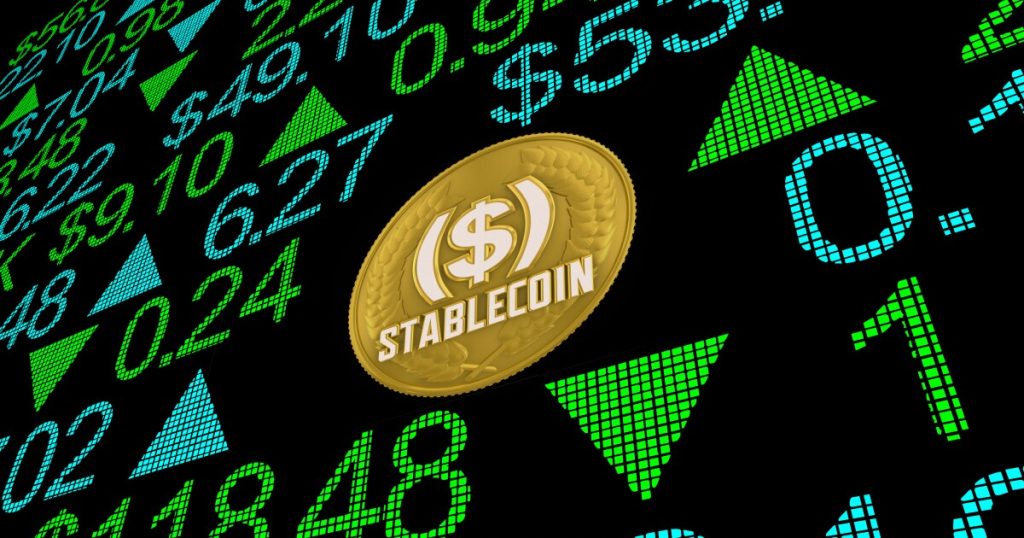Adobe Stock
While many pixels have been spilled (
I don’t mean how issuers earn revenue — that part is straightforward and well-documented: The bulk will come from interest on the reserve assets (short-term Treasuries, repo, money market funds and the like), with service fees and possibly partnership payments making up the rest.
Rather, I’m thinking about the road map. All new service-related products are born (or at least should be) with an evolution in mind, an idea of what they can eventually become. This also applies to dollar-backed tokens.
And here is where an interesting split appears.
On the one hand, we have stablecoins issued by nonbanks such as fintechs and crypto-native firms such as Circle, PayPal, Stripe and others.
On the other, we have those issued by banks. These are still, with very few exceptions, at the idea or perhaps internal pilot stage, but enough traditional financial institutions have hinted at plans to issue their own dollar tokens that they already feel like they’re part of the landscape.
Both bank and nonbank stablecoins are, under the hood, similar if not identical in function — they are backed 1:1 by safe, liquid assets to ensure they hold the value of $1, and they move on blockchains rather than traditional financial rails.
But the road maps are different. This is not so much due to strategy or even communication styles — it’s due to the nature of the issuers.
Banks are heavily regulated industries, and their maneuverability is limited.
Nonbanks have more flexibility.
We can see a clear example of this in the differences between Zelle and Venmo, two of the most popular retail payments platforms in the U.S.
For those not familiar with the history, Zelle was built on the rails of the clearXchange service, launched in 2011 by Bank of America, JPMorgan and Wells Fargo to offer free peer-to-peer, business-to-consumer and government-to-consumer payments across a range of banks and credit unions using only email or mobile numbers as identifiers. In early 2016, the platform was consolidated with Early Warning Services LLC, a fraud prevention and risk management business also owned by a group of banks, including those behind clearXchange. The updated and rebranded platform launched as Zelle in 2017.
Venmo has a very different origin story: Its two founders met as freshman-year roommates, and after trying out a college classifieds service, a music download platform, an online point-of-sale for yoghurt stores and a few startup roles, they dove into solving the frictions of friend repayments. Initial prototypes linked PayPal’s backend to SMS, removing the formality of logins and account details by enabling users to initiate payments via text with accompanying messages. The project was acquired by Braintree in 2012 and then by PayPal in 2013, which pushed the distribution and brand recognition to a new level, creating a “payments ecosystem” in which stored funds power peer-to-peer transfers, in-app payments, investing, social messaging with emojis and GIFs, invoicing, bill sharing and more.
The different approaches between the two platforms highlights not just a split in the way technology has impacted the field of payments; it also underscores different attitudes toward innovation, and the way the concept of payments is changing.
Zelle sees payments as a bank function that could use an efficiency upgrade. Venmo sees payments as a feature of relationships.
We are seeing the same split in the platforms’ different approaches to stablecoins. Venmo
What’s more, the divide goes beyond Zelle and Venmo.
Going by public statements, banks see stablecoins as a better payment method: faster and often cheaper.
Crypto-native firms and fintechs, on the other hand, understand that stablecoins enable new functions: settlement for crypto assets, collateral for margin trades, access to decentralized lending for additional yield, a base asset for decentralized swaps, currency for digitized trade finance agreements, the connective tissue for entire networks, and so on.
Just as Zelle is about payments and Venmo is about relationships, bank stablecoins want to improve on a traditional function, while nonbank stablecoins want to power a new ecosystem.
Put differently, Zelle and other bank apps do payments, but better. Venmo and other fintechs and crypto-native firms push payments into a new sphere.
None of this is surprising: Banks have risk-aversion in their DNA, as they should — such systemic businesses cannot afford to be seen taking structural risks. New tech firms, on the other hand, are all about trying out new concepts to see what sticks.
But even those generalizations are evolving. As tech barged into finance, it moved on from the manic startup days of “ask for forgiveness rather than permission,” because that just doesn’t work in a heavily regulated industry. Nevertheless, the muscle memory lingers.
And banking has traditionally been about preventing intrusion from upstarts that want to disrupt the fundamental concepts of trust, accountability and centralized support. But it recognizes the need to modernize.
With the introduction of stablecoins, the innovative and the traditional are converging. This isn’t new, banks have long been aware of the need to adopt new technologies just as fintechs and crypto natives understand that, to be part of the mainstream, they need to play by its rules.
What is new is the flexibility blockchain technology confers on each: Given the malleability of code and the potential connectivity within on-chain ecosystems when money moves on the same rails as assets and applications, there is plenty of scope to both iterate on established processes and to reshape the concept of money. With blockchain, all have access to the same tools. Yet history and culture matter.
This is why we’re likely to see dual-track stablecoin evolution. Banks will iterate on efficiency while becoming more like fintechs. And tech-first businesses will continue to blur the boundaries of established definitions while creating new ones.

